First Waxwings of the New Year.
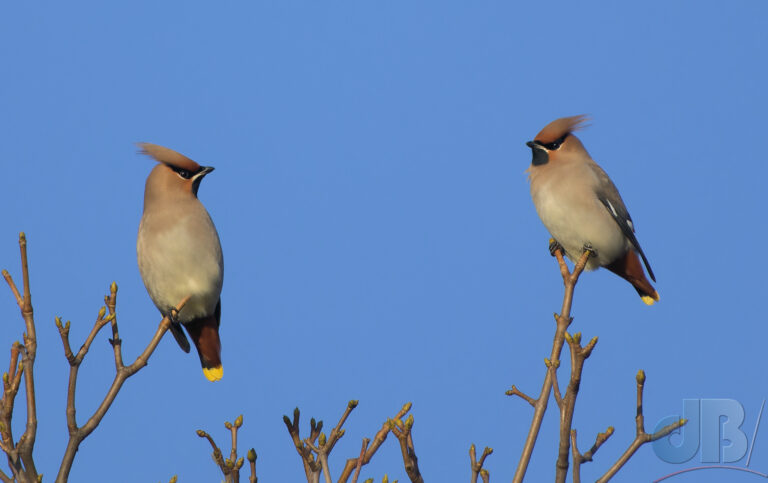
There is an ongoing Bohemian Waxwing irruption in the UK with hundreds, if not thousands, of this most northerly species of bird having headed south in search of food over the last couple of months. I heard some flying over our house in November, but finally saw a tiny flock of four feeding on rowan trees outside somebody’s house opposite the primary school in the Cambridgeshire village of Coton. I got some nice photos but it was a dull day, so it was lovely to have a sunny New Year’s Day and to know that some had arrived to feed on rowans next to the railway station in another nearby village, Great Shelford.
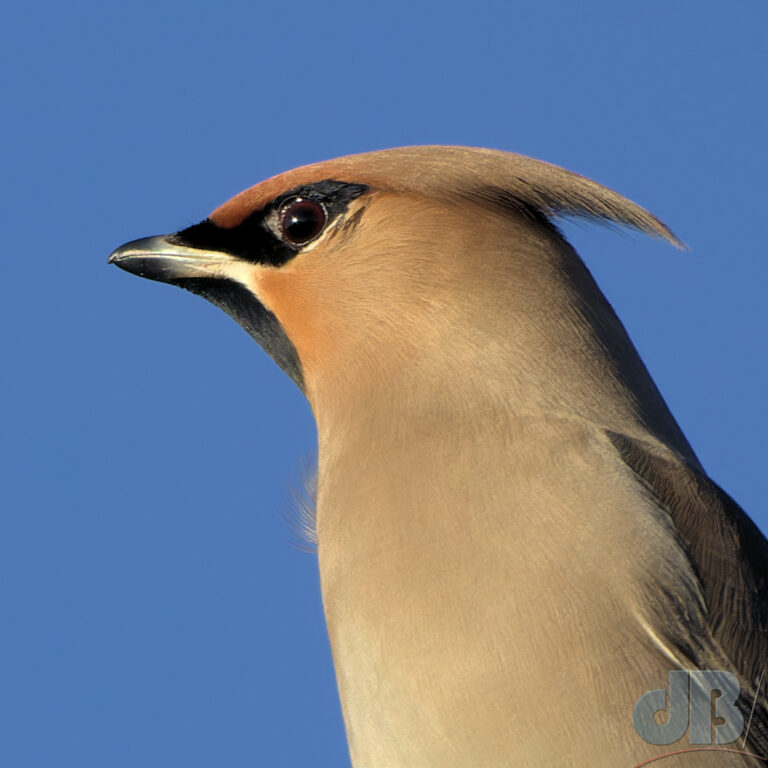
We’d actually tried to see them them week before and noted a flock of about 20 in flight heading away from the station. But, on New Year’s Day, there were 11 glowering from the tall trees next to the railway station. They were plucking ivy berries from the plants growing on those trees but because there were so many birders, twitchers, and toggers near their favoured rowans, the birds had to choose their moments carefully to fly in and snatch a few berries in very brief bursts of feeding activity.
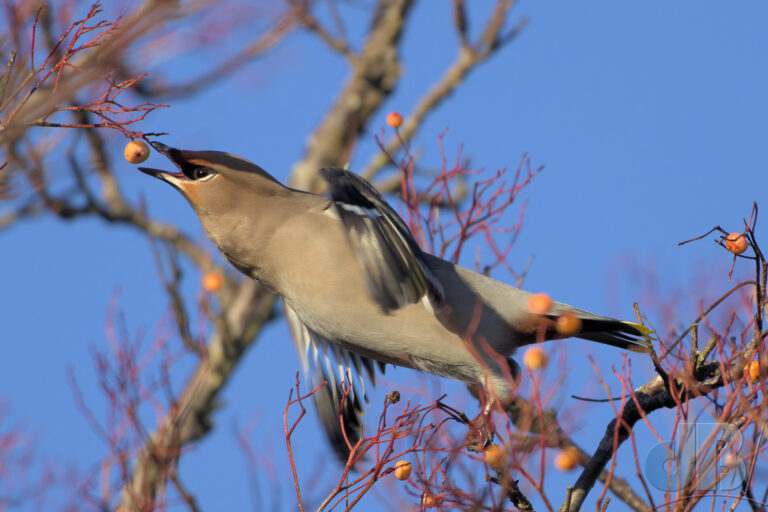
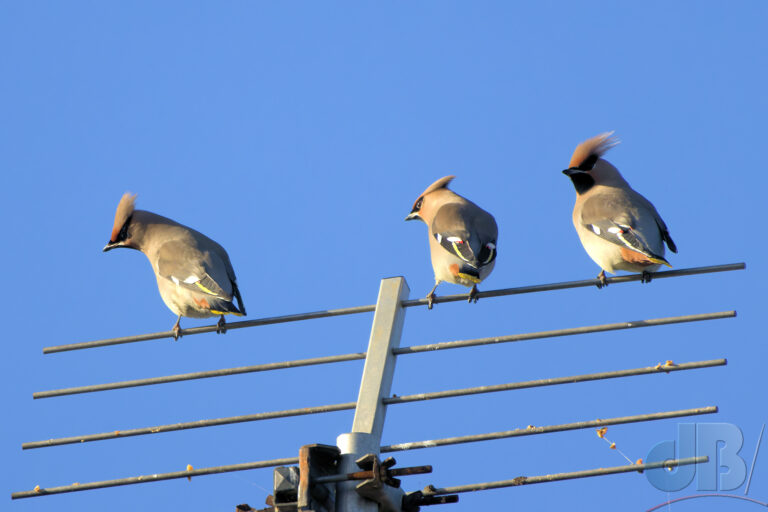
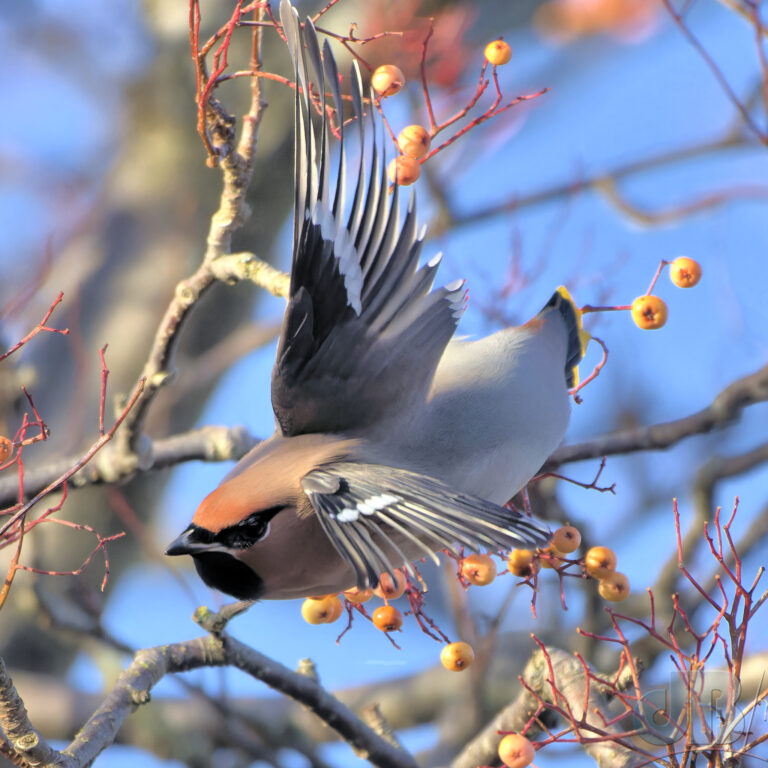
Waxwings head south from Scandinavia when the food supply falls short, usually in large numbers when they’ve had a good breeding season, and there’s simply not enough berries to go round. Each bird can eat hundreds of berries each day. Hence the irruptions. I check BirdGuides most days and they are still present in our neck of the woods in good-sized flocks that come and go. Next decent sunny day, I will head out to track down the closest flock. It’d be wonderful if they turned up in our village again (there was one at the start of the year).